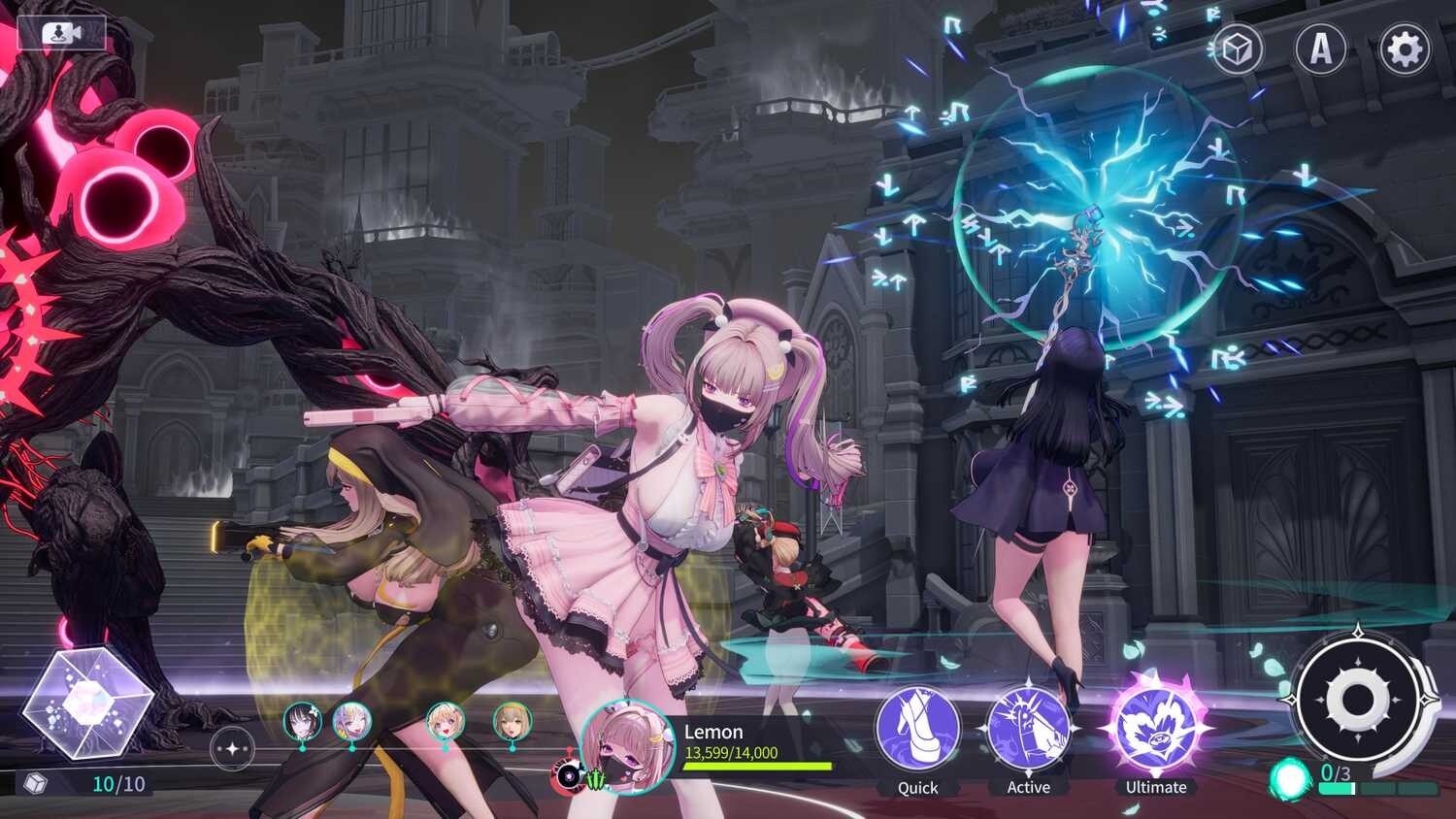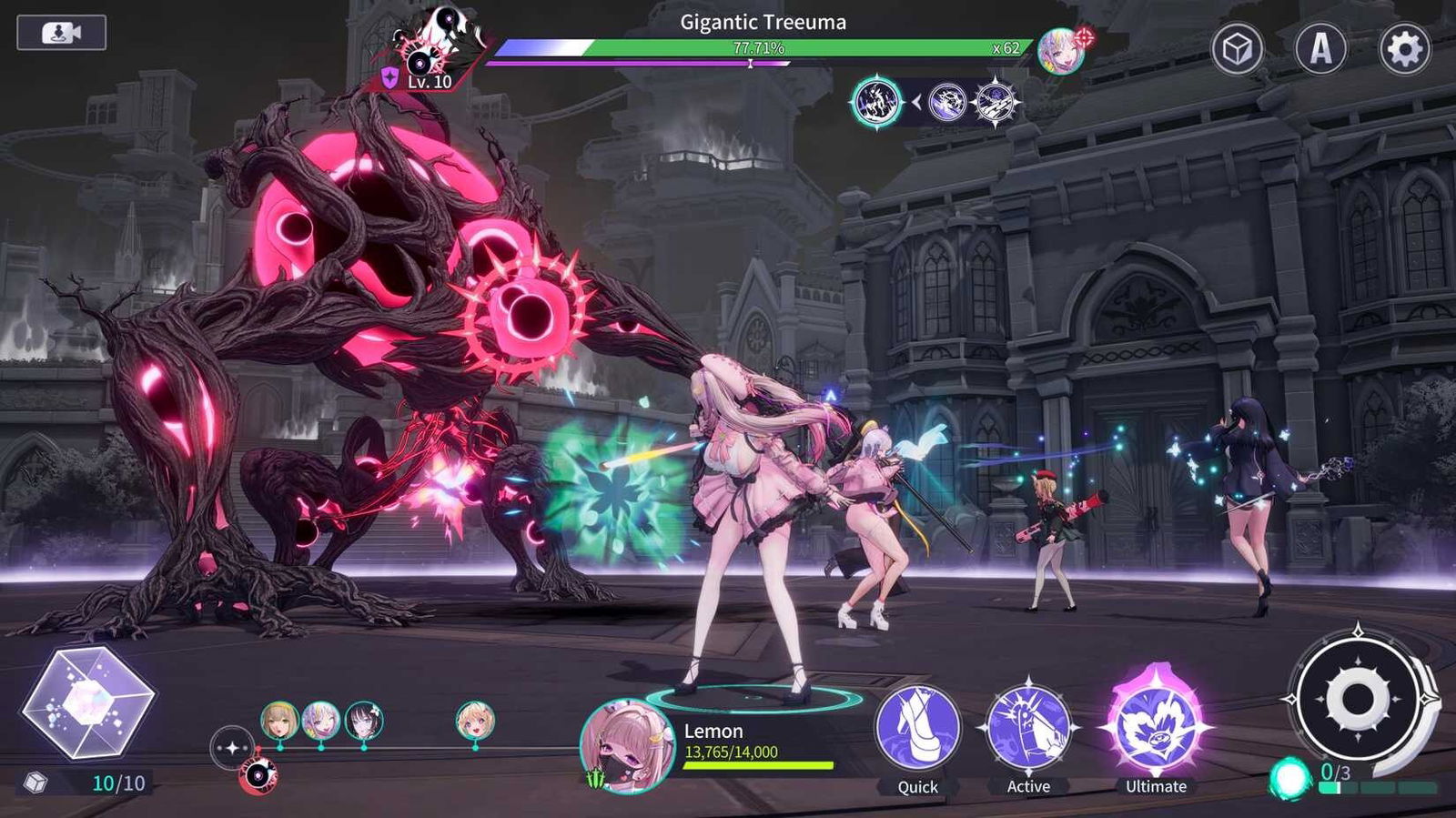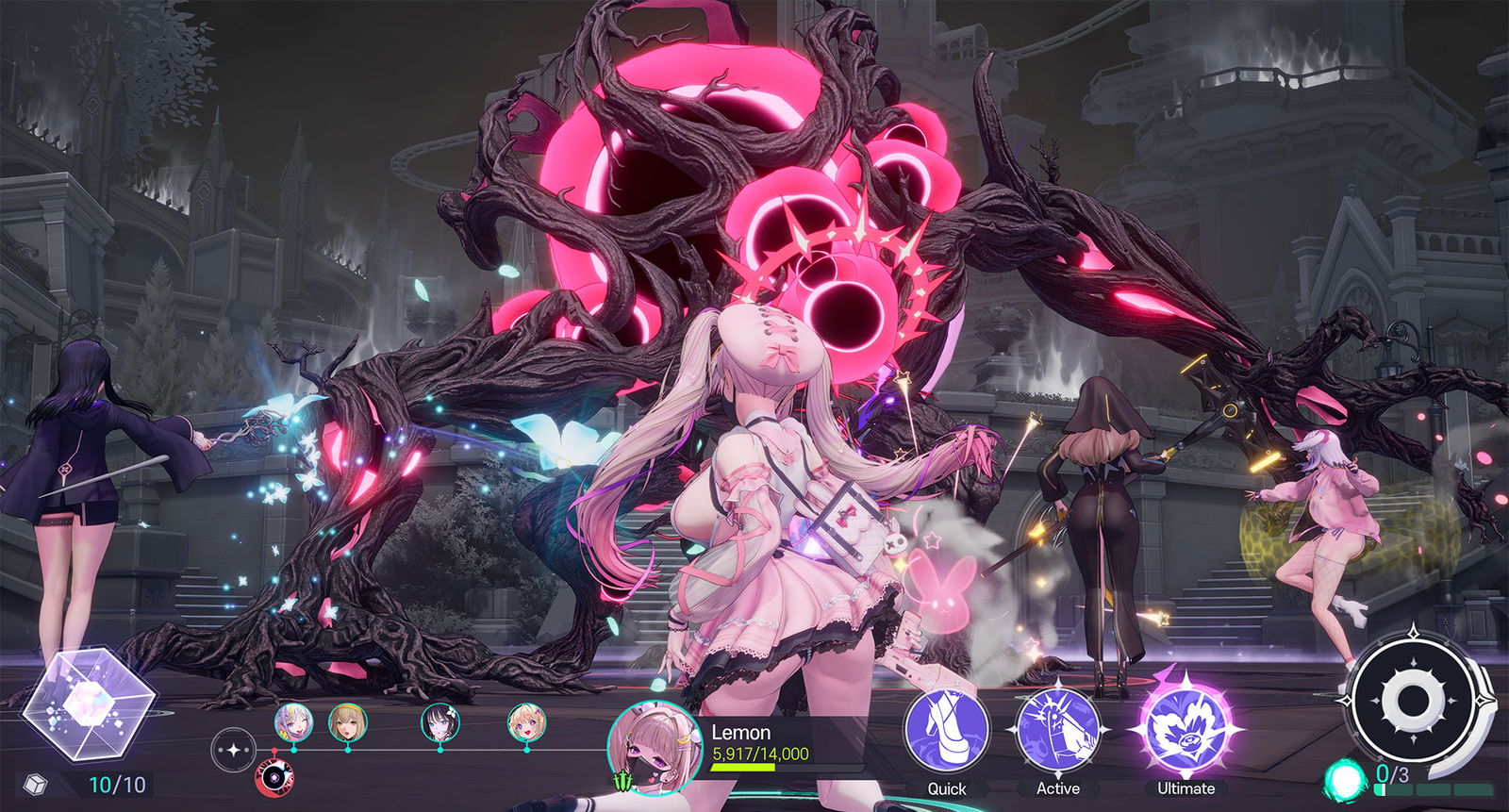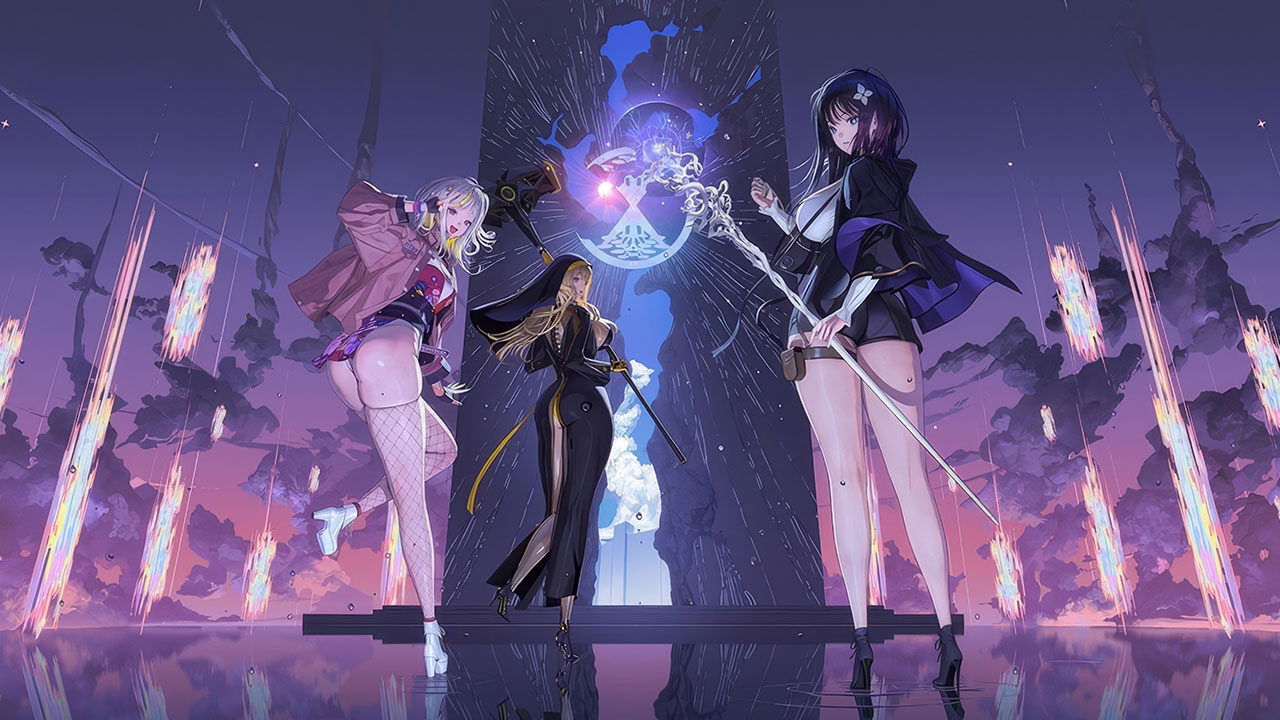If you were at the Tokyo Game Show this year, it would have been nearly impossible to miss the Smilegate booth, boasting massive LCD screens, a large presence and showcasing its new games, including MIRESI: Invisible Future. This new title was a bit surprising, offering a collectible RPG that mixes time travel storytelling with semi-automated combat. The game is set for a worldwide release in 2026 across multiple platforms, including mobile devices and PC. I had a chance to play the demo to see what all the fuss was about.
Starting up the demo, MIRESI: Invisible Future puts you in the role of a councillor tasked with saving the timeline of Yggdrasil. The unique story unfolds alongside three heroines—Ende, Isuka and Tieria—who travel across collapsing eras in an effort to prevent disaster. While many story details remain under wraps, I did get a good sense of the beginning of the game, which touches on time paradoxes, battles and the fate of humanity—as this type of game is wont to do.

The game is being developed by Control 9, a South Korean studio co-founded by veterans who worked on Goddess of Victory: Nikke and other titles. Leading the visual direction is renowned illustrator Hyung-seop “Hyulla” Kim, who serves as art director. If you’ve played or seen any of the designs from that game, the look of MIRESI: Invisible Future will feel familiar, with a visual style similar to what players saw in Nikke. Even though I only experienced a short section of the game, I have to admit the world’s look and style are already striking, though, as expected, there’s some of the usual fan service you’d find in a title like this.
Speaking about the game’s art style, Hyung-seop “Hyulla” Kim said, “Basically, there were a lot of difficulties. Time travel is our core concept, and time travel means we have to depict multiple eras simultaneously. In order to bring all these parts together, we established our own unique art style and organized a logical approach to design. We provided extensive guidance and feedback to our internal design team, and as a result, this is what we’ve been able to create.”
Once you jump into gameplay after a brief story segment, you’re introduced to the core combat system. Combat in MIRESI: Invisible Future blends semi-automated attacks with tactical elements borrowed from turn-based RPGs. A combat timer runs along the bottom of the screen, showing when each character can perform a special manoeuvre. While waiting for those moments, both allies and enemies execute auto-attacks, giving players time to assess the battlefield and plan their next move.
It works because it’s easy to understand, allowing players to grasp the basics quickly and focus on strategy—figuring out the best way to achieve victory with the tools at hand. Special manoeuvres range from healing and evasive moves to devastating attacks, and choosing the right action at the right moment becomes key to survival. The system demands attention and quick thinking, creating a tactical layer that recalls classic RPG combat. It’s a setup that rewards players who stay engaged rather than those who try to coast through encounters.
Smilegate also released a teaser titled If It’s You, Could You Change It?, offering a look at the game’s style and showcasing the three main heroines locked in battle. The teaser establishes the game’s emotional tone and dramatic visual style, reflecting Kim’s signature approach to character design. While the preview doesn’t include gameplay footage, it offers a glimpse into a world filled with despair, resistance and high-stakes conflict. It also hints at what players can expect at the core of the experience, though the full game appears to be more complex than the teaser suggests.
“Combat in MIRESI: Invisible Future blends semi-automated attacks with tactical elements borrowed from turn-based RPGs.”
Speaking about the three main heroes, Hyung-seop “Hyulla” Kim explained: “The three main characters were already determined from the scenario, so I designed them based on those concepts. They were always meant to be the central figures in the story, which is why we revealed them first. And of course, there will be many more characters coming later.”
Once you move past the core battle systems and explore the game as a whole, you’ll find a much larger experience—complete with an open-world JRPG setting that takes place before the deviation shown at the beginning of the game. This section also highlights more of the cast Smilegate has teased so far.
Unfortunately, it was at this point that my demo time ran out, and I had to head over to see the other game Smilegate was showcasing in Tokyo, Chaos Zero Nightmare—but more on that later.

The three main elements of the game seem central to the experience, and Hyung-seop “Hyulla” Kim explained how these components fit together: “All three elements are equally important, but I’m particularly attached to the open-world portion. That’s where we’ve invested the most effort, and it’s the space where you can freely see the characters in full 3D, along with the background and lighting all together. That’s where the art really shines, and that’s what we’re focusing on developing right now.”
Even with less than 30 minutes of playtime, it’s clear the game embraces the visual novel style of titles such as Steins;Gate, offering a story waiting for players to explore. MIRESI: Invisible Future is being positioned as a subculture-themed collectible RPG, a genre that has gained traction in recent years thanks to games like Nikke and other character-driven mobile titles. The focus on narrative, worldbuilding and striking character design aligns with Control 9’s background in mobile RPG development and live-service operations.
Even with the short time I had at Tokyo Game Show 2025, I enjoyed the time-travel premise and the tactical depth of the combat system. There appears to be plenty of substance at the core of the experience, offering a game that invites players to dive into its universe, characters and world as a whole. That said, Smilegate isn’t shying away from fan service, which is most evident in the character designs—particularly with Isuka and Tieria’s outfits, which push boundaries. For some players, that will be part of the appeal. For others, it may not land as well, so make your call accordingly.

MIRESI: Invisible Future stands as one of the more intriguing collectible RPGs on the horizon, especially for fans drawn to Kim’s art style and time travel narratives. I was genuinely impressed by how polished it looked, even this far from release, and conversations with Smilegate staff made it clear there’s plenty of excitement surrounding the project. Whether MIRESI: Invisible Future can carve out its own space in a crowded market remains to be seen, but the pedigree behind it suggests it has the tools to succeed. Control 9’s experience with live-service games and Smilegate’s publishing reach could give the title the support it needs to find an audience when it launches next year.





